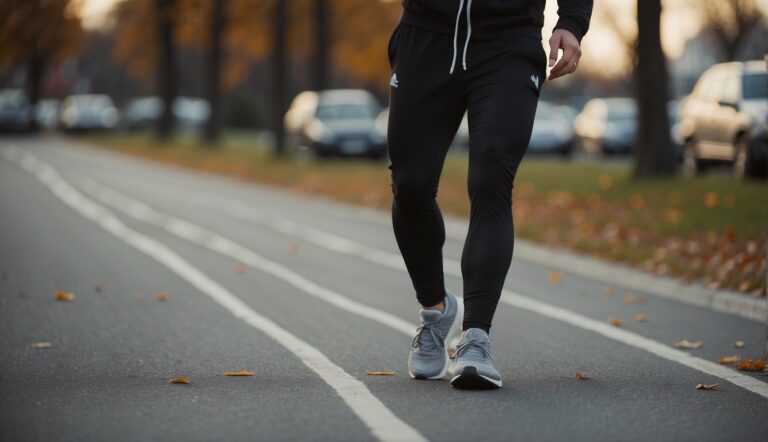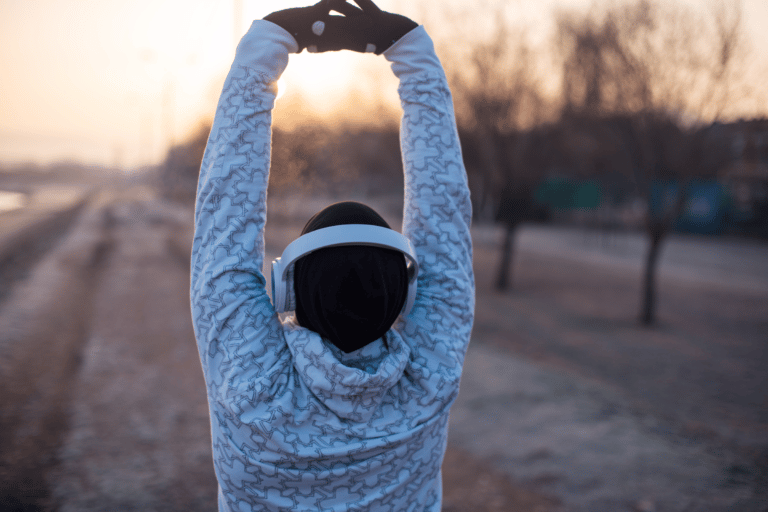When Does Running Stop Hurting? (Getting Over Beginner Aches & Pains)
When you’re new to running, your body will take time to get used to the activity, so it will cause aches and pains. Fortunately, this pain doesn’t last forever, and running will become second nature to you as your body adjusts.
Running stops hurting after at least six weeks of consistent training – although it may take longer depending on the shape you were in before starting. Running will eventually get easier; in the meantime, you can reduce pain while running by straightening your back, shortening your stride, focusing on your pace, and staying hydrated.
Keep reading to learn everything that you need about when running stops hurting. In addition, we will give you tips to minimize your pain so that you feel encouraged to continue running.
Why running hurts at first
It takes time for your body to adapt to any new activity, including running.
When you first start running, you’ll notice a variety of pains – both immediate and throughout the next day or two – because of:
- Lack of muscle foundation
- Increased oxygen intake
- Lack of endurance
- Repeated impact
Your body builds muscle by damage in the connective tissue around your muscle and healing it to make it stronger. If you haven’t damaged this muscle tissue previously, then you don’t have a strong foundation to build on yet.
Running is a strenuous activity that requires plenty of endurance. You may notice chest pain during the first few running sessions. This chest pain is typically normal because you’re not used to breathing in as much oxygen as you do when you run.
People also feel pain when they run because their muscles tire out more quickly and signal to the brain that they’re worn out. When your body gets used to running it, it won’t give pain signals to your brain as frequently to let you know you’re tired.
If you don’t spend much time on your feet, you’ll notice plenty of pain when you go to bed after a long running session. It takes a while for your feet to get used to feeling your body weight while running. Running is a high-impact exercise, so your feet feel more than your regular body weight when you land.
Lack of muscle foundation
Whenever you start a new physical activity, it takes time to build up the muscle foundation required to execute the activity without pain.
You develop stronger muscles by damaging your muscles and allowing them to heal until they strengthen. The first time you damage your muscles through exercise, it will hurt.
As you begin to run regularly, you’ll see your leg muscles start to develop and the pain will lessen.
Increased oxygen intake
Running makes you breathe harder than most physical activities.
When you intake extra oxygen, you likely experience chest pain because your lungs aren’t used to moving like this.
Just like with the other muscles, your lungs will get stronger as you run regularly and the pain will fade away.
Lack of endurance
Running is a lot of repetitive motion, which requires plenty of endurance.
If you’re new to running, then you’re not used to moving your body repetitively in this manner. This is why you may feel like your legs are going to give out during a run.
The more you run, the more endurance you build and the easier this activity feels.
Repeated impact
Running is a high-impact sport, so you feel more than your regular body weight when your feet hit the ground.
Repeated high-impact running can cause foot pain if you don’t purchase the proper footwear. You need running shoes with plenty of cushion and support to minimize the impact of your run.
Once you decide you’re going to run regularly, pick up a good pair of running shoes. Reducing your foot pain will make it easier to push through the others.
Is it normal to feel pain when running?
Whenever you start a new physical activity, your body needs time to get used to this exercise. The connective tissue in your muscles needs to heal and strengthen to minimize running pain. Anyone new to participating in this activity will likely feel pain for the first several weeks while they get used to it.
When will running stop hurting?
It takes the average runner about six weeks running to stop hurting as a beginner. However, this exercise needs to be consistent for improvements to appear. If someone doesn’t run consistently, they might hurt for longer than expected six weeks.
If someone exercises often but switches to running, they might easily adjust to the activity. People who already have muscle build-up have a great foundation to build their running routine. Someone already athletic might get used to running within a few weeks instead of 6 weeks.
Alternatively, if someone isn’t used to exercise at all, it could take longer than six weeks for the body to adjust to the activity.
Should you run through the pain?
If you feel discomfort or pain in your legs or feet while you run, continuing if the pain is mild could be okay. However, if you feel severe pain during your run, you must stop immediately and consult a doctor. It’s normal to feel aches and pains during an exercise, but if this pain is sharp and makes it hard to continue, you should listen to your body.
Anytime you have trouble moving your limbs or notice swelling, you should stop running. Running with mild muscle aches is normal, but anything more than that should be avoided. Does also means you should take rest days after difficult running sessions that leave you in pain that’s hard to cope with the day after.
When to stop running when in pain
If you notice any sharp pain, you should stop running immediately.
Watch out for any of these red flags during a running session to ensure you don’t cause further pain or injury:
- Swelling
- Trouble moving
- Pain when touched
- Tingling sensation
- Sharp pain
If you experience any of these, stop running. You don’t want to wear down your muscles too much, and you must be mindful of strains and sprains.
Swelling
While some pain is to be expected, especially for beginners, swelling is not a normal reaction to exercise.
If you notice any part of your body swelling, you should rest instead of exercising.
It is always important to listen to your body when working out. Continuing to run on it could cause permanent damage to the muscle tissue of a swollen area.
Trouble moving
If you have difficulty moving your legs while you run it, you may have pulled a muscle or sprained part of your body.
Your body will make it difficult for you to move any part of your body that you’re not supposed to.
Always listen to your body when this happens and cease your exercise immediately.
Pain when touched
If you touch a part of your body and immediately feel pain, you should not exercise that body part.
Exercise wears down connective tissue, which is not good if you have a part of your body that needs time to heal.
If you touch your leg and feel pain, you may have an internal injury that needs care before you run again.
Tingling sensation
If you have a tingling sensation while running, this usually indicates that you’re not getting enough blood flow to that area.
Restricting your blood flow during your run can be big trouble because your heart pumps a lot of blood during aerobic activities.
If you notice tingling sensations often, you should speak with the doctor because there could be something serious going on with your health.
Tips to reduce or deal with pain when running
Even though pain is almost inevitable when starting a new workout routine, there are certain things you can do to minimize your discomfort while running.
To reduce pain when running, you should:
- Straighten your back
- Shorten your stride
- Pace yourself
- Stay hydrated
Let’s take a look at each of these tips and see how they help.
Straighten your back
Slouching while you run can cause great pain during your exercise.
Straightening your back is a great way to minimize pain and improve your posture. Straightening your back will improve your range of movement, so you don’t feel as much pain.
You may have to repeatedly remind yourself to straighten your back until you get used to it.
Shorten your stride
You don’t need to take extremely long strides every time you run.
If you notice leg pain, shortening your stride can minimize that pain while still maintaining your aerobic activity. Long strides can hurt extra if you haven’t stretched before your run.
If you’re worried you won’t be able to cover as much ground with shorter strides, try to make more of them. Or consider judging the quality of your run by the time rather than distance.
Pace yourself
You’ll get the most out of your run if you pace yourself.
focus on running for a long time instead of running as fast as possible.
Pacing yourself means running for as long as possible instead of as fast as possible. It allows you to listen to your body so that you don’t hurt yourself more than necessary when you run.
You only have so much energy, and you don’t want to utilize it inefficiently.
Stay hydrated
Running will make you sweat a ton, so you need to replenish your water supply.
If you don’t drink enough water, you’re more likely to experience muscle cramps due to frequent exercise.
The number one cause of muscle cramps is a lack of hydration.






